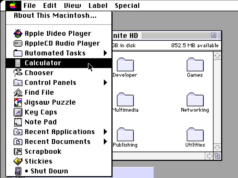
SMART goals are a helpful way to turn your ideas and to-dos into actionable plans, but if you work on a larger team or need to track more ambitious, long-term goals, SMART might not be the best method to turn to. Depending on your needs and workflow, other goal-tracking methods, like FAST and PACT, may be a better fit.
What are SMART goals? When should you use them?
SMART goals are specific, measurable, achievable, relevant, and time-bound goals. When you make them, you make sure your goal sticks to all five of those requirements, usually writing it out in a sentence like this: “By the end of the month, I will have aced three practice quizzes to prepare for my chemistry test.” It’s specific because it says what you’re going to do and why, measurable because you’re setting an amount of quizzes and expected grade on each, achievable because it can reasonably be done, relevant because it has to do with a pressing need, and time-bound because it’s related to a forthcoming deadline.
SMART goals are used by students, workers, and anyone who needs to break down their to-do list into manageable action items, but they can be limiting. For example, they can be too specific to be broadly applicable, so if you have to do the same sort of task at work every month, you’ll redo the SMART goal every time instead of creating a process to follow. They’re also not ideal for collaboration because while you can share a SMART goal with others, it doesn’t leave much room to be concise and authoritative about who needs to do what to reach the goal.
FAST goals
The first helpful SMART goal alternative is the FAST goal, which is especially helpful if you’re in a position to lead or delegate, but is generally useful for teams overall. FAST stands for the following:
Frequent discussions
Ambitious scope
Specific measurements
Transparent
When using SMART goals, you analyze your desired end result through the lens of how achievable it is and when you’ll have it done. With a FAST goal, you’re looking less at the elements that define the final product and more at how you will collaborate on it. FAST goals enable teams to adapt and evolve as the project goes on because they require frequent discussions and transparency about what the ambitious goal is and how its success will be defined.
Say your team at work has to build a report for the end of the quarter. You already know when it’s due, so you don’t need to incorporate timeliness, like you would with a SMART goal. Instead, consider the task through the FAST lens, setting up regular times to meet and discuss it and creating clear communication channels so everyone can stay on the same page. The success of the project might be measured by manager feedback, client response, the enhancement of processes, or increases in sales; you need to define early on what “success” will look like, but staying communicative and transparent will help—and will enable you to make the end goal ambitious.
PACT goals
PACT goals, like FAST goals, focus more on the process of achieving a desired result than the measurements of the result itself. Here’s what PACT stands for:
Purposeful
Actionable
Continuous
Trackable
Like a SMART goal, PACT works well if you’re tackling something on your own, but it is more process-driven. Let’s say your goal is to get in shape. With a SMART goal, you might have to define it like, “By the first day of summer, I will have worked out for five hours per week, lost 20 pounds, and increased my muscle mass by 5%.” It’s specific, measurable, achievable, relevant, and time-bound, but once you write that down, you’re on your own fighting your way to the finish line. A PACT goal might look more like, “To get in better shape and improve my health, I will work out five times a week and monitor my weight loss and muscle gain using my smart scale.” Instead of being time-bound, this approach takes the process itself into consideration—but also incorporates purposefulness, reminding you why you’re doing what you’re doing. You still take actions and track metrics, but the goal is rooted in purpose and relies on continuity, not a defined end result.
Keeping the purpose front and center is important, as it helps you stay motivated and reminds you of what you’re really working toward. If you’re building a report at work, you can get caught up in the absolutism of knowing this is your assigned task and you have to do it. If you bear in mind that you’re building the report so your company can bring in more clients or enhance internal operations, you remember that this could lead to more business, accolades, or even a raise. Tracking your progress is also key to staying motivated and moving toward an end goal, even if it isn’t as rigidly defined as a SMART goal might be.








